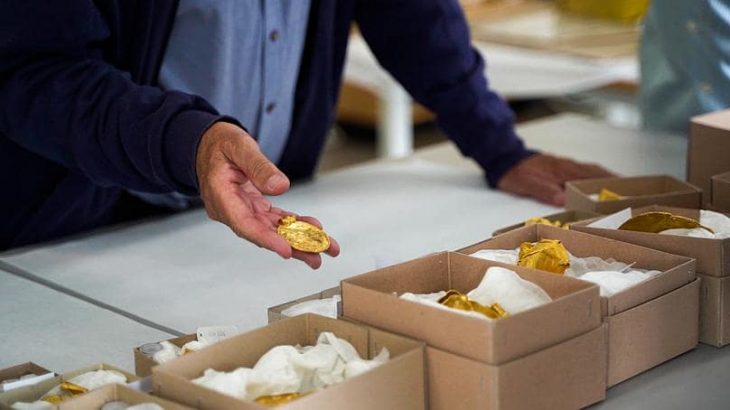
Using a metal detector, a man in Denmark’s countryside discovered a cache of 1,500-year-old gold objects. The treasure trove offered up more than two pounds of gold, according to the Vejlemuseerne, the museum consortium in Vejle, Denmark, which announced the news on Sunday.

The trove was found in Vindelev, a town about 150 miles from Copenhagen. It includes coins from the Roman Empire as well as medallions known as bracteates, which would have been sewn onto clothing and worn as ornamentation. These newly found objects are expected to go on view at the Vejlemuseerne in February 2022.
Among those bracteates is one inscribed with text translating to “the High”—a possible reference to a ruler active at the time it was produced or to the Norse god Odin. That medallion, along with all the other objects found, dates back to the 6th century C.E.

Related Articles
These pre-Viking objects may have been buried amid the threat of ecological doom. In the year 536, a volcano erupted, creating a gigantic ash cloud that caused famine. Experts believe that, amid the chaos, the inhabitants of modern-day Denmark rejected their rulers and parted ways with gold objects bearing these leaders’ images, either as a way of hiding the medallions from enemies or as a means of placating angry gods.
Archaeologists on the staff at the Vejlemuseerne are now considering the possibility that Vindelev was a center of a sprawling and powerful empire during the late Iron Age. Prior to the find, “there was nothing that could make us predict that an unprecedented warlord or great man lived here, long before the kingdom of Denmark arose in the following centuries,” said Mads Ravn, a research director at the Vejlemuseerne, in a statement.
The trove is not the only one of its kind that has been found recently. This past May, archaeologists discovered seven 1,500-year-old bracteates beneath clay soil in Norway.





